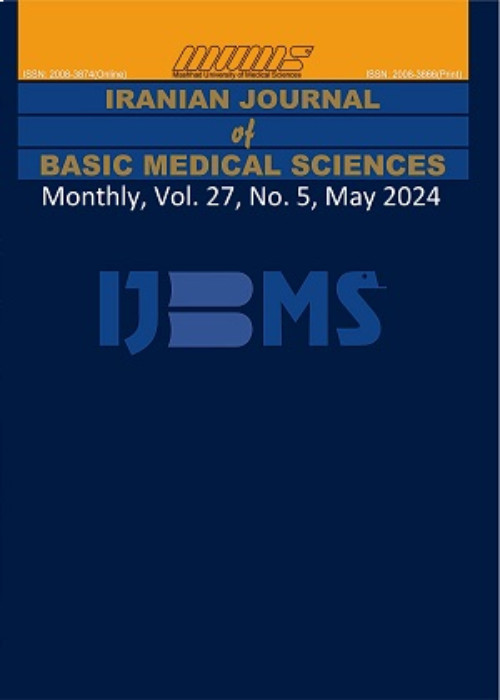Sesquiterpene fractions of Artemisia plants as potent inhibitors of inducible nitric oxide synthase and cyclooxygenase-2 expression
Author(s):
Article Type:
Research/Original Article (دارای رتبه معتبر)
Abstract:
Objective(s)
Artemisia species are important medicinal plants throughout the world. Some species are traditionally used for their anti-inflammatory effect. The present study was designed to isolate sesquiterpene fractions from several Artemisia species and evaluate their anti-inflammatory activities on key mediators and signaling molecules involved in regulation of inflammation.Materials and Methods
Sesquiterpene fractions were prepared from several Artemisia species using the Herz-Högenauer technique. Lipopolysaccharide (LPS)-stimulated J774A.1 macrophages were exposed to isolated fractions. Their possible cytotoxic effect was examined using MTT assay. In addition, nitric oxide (NO) release was measured using Griess method and prostaglandin E2 (PGE2) level was determined by enzyme-linked immunosorbent assay (ELISA). Moreover, protein expression of pro-inflammatory enzymes, inducible nitric oxide synthase (iNOS) and cyclooxygenase-2 (COX-2) were investigated using Western blot analysis. Results
Nitric oxide level produced by LPS-primed macrophages was significantly decreased with all prepared fractions in a dose-dependent manner. Saturated sesquiterpene lactones-rich species (Artemisia kopetdaghensis, Artemisia santolina, Artemisia sieberi) showed the highest suppressive activity on NO and PGE2 production via suppression of iNOS and COX-2 expression. Fractions bearing unusual (Artemisia fragrans and Artemisia absinthium) and unsaturated sesquiterpene lactones (Artemisia ciniformis) possess less modulatory effect on PGE2 production and COX-2 expression. Conclusion
It can be concluded that some of the medicinally beneficial effects attributed to Artemisia plants may be associated with the inhibition of pro-inflammatory signaling pathways. However, these effects could be dependent on the type of their sesquiterpene content. These findings also introduce new Artemis species cultivated in Iran as a useful anti-inflammatory agents.Keywords:
Language:
English
Published:
Iranian Journal of Basic Medical Sciences, Volume:22 Issue: 7, Jul 2019
Pages:
774 to 780
magiran.com/p1981600
دانلود و مطالعه متن این مقاله با یکی از روشهای زیر امکان پذیر است:
اشتراک شخصی
با عضویت و پرداخت آنلاین حق اشتراک یکساله به مبلغ 1,390,000ريال میتوانید 70 عنوان مطلب دانلود کنید!
اشتراک سازمانی
به کتابخانه دانشگاه یا محل کار خود پیشنهاد کنید تا اشتراک سازمانی این پایگاه را برای دسترسی نامحدود همه کاربران به متن مطالب تهیه نمایند!
توجه!
- حق عضویت دریافتی صرف حمایت از نشریات عضو و نگهداری، تکمیل و توسعه مگیران میشود.
- پرداخت حق اشتراک و دانلود مقالات اجازه بازنشر آن در سایر رسانههای چاپی و دیجیتال را به کاربر نمیدهد.
دسترسی سراسری کاربران دانشگاه پیام نور!
اعضای هیئت علمی و دانشجویان دانشگاه پیام نور در سراسر کشور، در صورت ثبت نام با ایمیل دانشگاهی، تا پایان فروردین ماه 1403 به مقالات سایت دسترسی خواهند داشت!
In order to view content subscription is required
Personal subscription
Subscribe magiran.com for 70 € euros via PayPal and download 70 articles during a year.
Organization subscription
Please contact us to subscribe your university or library for unlimited access!


